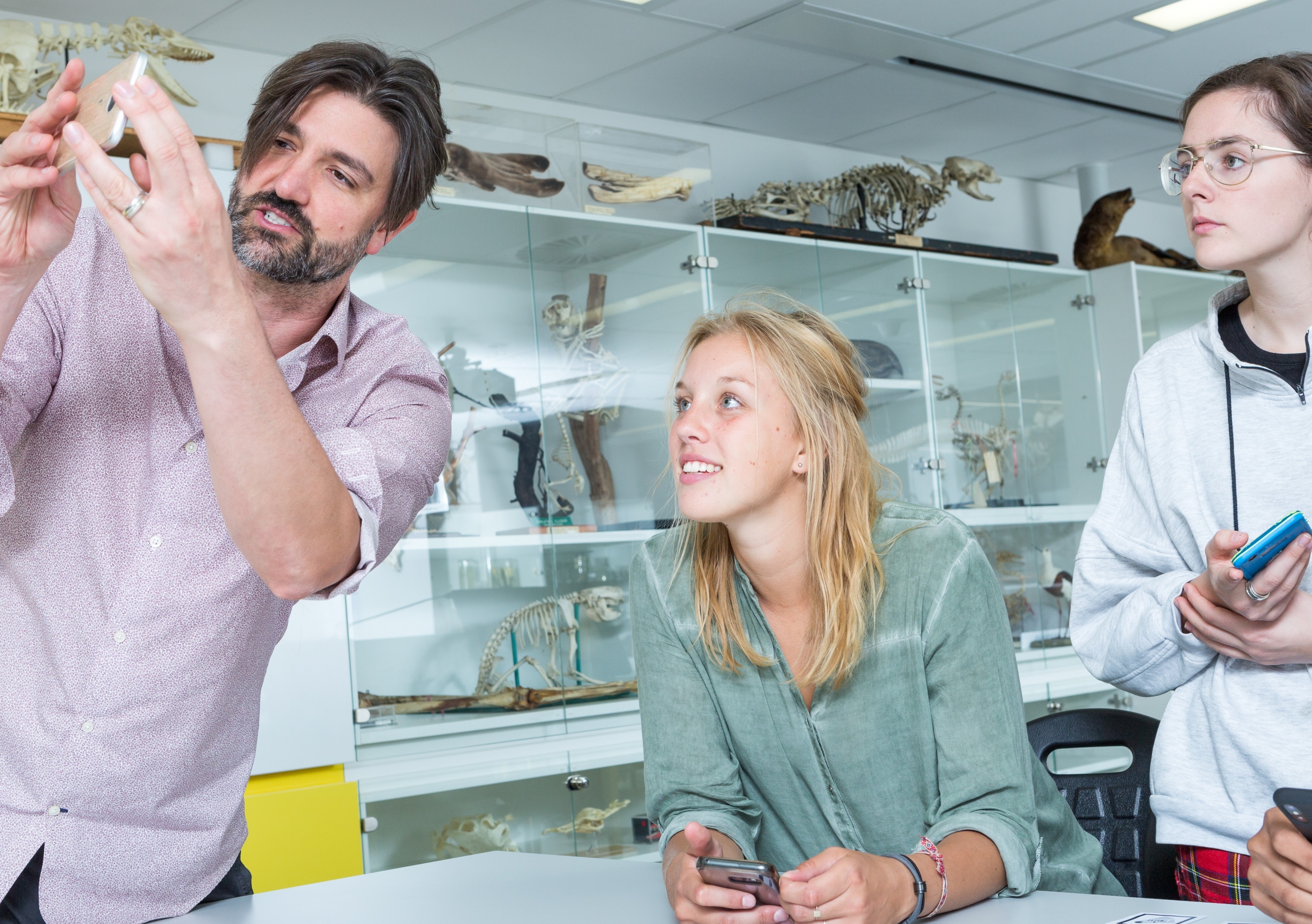

The complex challenges of teaching evolutionary biology to students – from primary school to university level – propelled UNSW Sydney Associate Professor Michael Kasumovic to turn to gaming technologies help students experience what it’s like to think and behave like practising scientists.
“Students are more likely to excel in science when they see themselves enjoying thinking through scientific problems,” says Associate Professor Kasumovic, an ARC Future Fellow in evolutionary biology at UNSW and founder of start-up tech company Arludo.
“To make science accessible, we need to do more than simply tell students what it is we discovered. We need to help them discover it for themselves.”
Recognising the need to boost essential STEMM skills through a shift from lecture-based learning to a practice-based model, Associate Professor Kasumovic created Arludo to develop a library of apps that turns smartphones into science equipment, capable of aggregating data from social science experiments.
The range of 25 games teach biology, psychology, chemistry, maths and ethics, allowing students to experience science through different stories and problems to see what they are most interested in.
Games range from those that help students better understand the geological forces that formed rocks at Coogee, classic psychology experiments that can be done in under five minutes and those that use augmented reality birds to teach students about mate choice and evolution.
“Almost all of our students carry around a mobile phone with them,” says Associate Professor Kasumovic. “These devices are essential to their life but are also powerful computers that can be transformed into a piece of scientific equipment. In many cases, students feel more comfortable around their phone than they do around scientific equipment. And we’ve helped teachers to turn a classroom of students into practising scientists.
“By tying these mobile video games and apps to the curriculum and making them social classroom experiences, it helps teachers bridge the gap between traditional lectures and practice or mastery-based learning.”
Many of the mobile games, which can be multi- or single-player, help speed up data collection, a crucial skill for scientific research. Experiments can be done in 10 to 15 minutes and teachers can focus on helping students interpret and discuss results after the game is completed.
“Allowing STEMM teachers flexibility is important in finding a middle ground to allow students more freedom in learning. Students are also able to learn the skills necessary in becoming data literate – a trait that has increasing importance as we continually collect and rely on data to make decisions.”
The mobile apps and games are already being used at Australian universities, including at UNSW in first-year biology, first-year ecology, second-year ecology and evolution, second-year animal behaviour, third-year evolution, first-year psych, first-year maths and first-year chemistry. They have also been used at University of Sydney and Macquarie University, and internationally at University of California, Berkeley and the University of New Orleans.
“Science teaching has used games in the classroom in the past, but this has largely been limited to simulations,” says Associate Professor Kasumovic. “But using mobile phones and a digital approach, science can be accessible by students anywhere.
“Now we are looking to take the technology to regional and rural schools to make hands-on science accessible through YouTube Live. We’ll interview scientists in real time and students can text in comments as the interview progresses.”
The interviewed scientist will then play an Arludo game while students viewing the live YouTube stream in the classroom do the same.
“We can then discuss the results the students collected together with the scientists. By using YouTube, a popular medium that teachers and students are used to, we can bridge the gap between students and scientists anywhere in the world.
“If we want to improve STEMM engagement and we want students to love and appreciate science, then we need to meet students where they hang out most. And that involves using technology to make students active participants in their science experience.”
